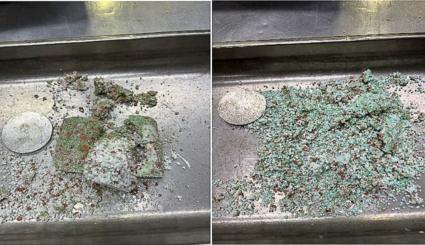2023: Nutrient Uptake Considerations Under Drought

Karl Wyant, Ph.D.
Drought conditions have impacted many growers across the North American crop growing regions (Figure 1). For example, the National Drought Mitigation Center shows drought now covers an estimated 64% of corn, 57% of soybeans, and 25% of spring wheat in the U.S. The impact of drought can be seen clearly in the Corn, Spring Wheat and Soybean Belts, according to recently released figure from the USDA (Figure 2).
Drought conditions can have a severe impact on yield, depending on the onset of the dry conditions (discussed here at length). Aside from the impact of hot, dry conditions, drought can also have an influence on the ability of the crop to uptake nutrients. In this article, we will discuss how drought can have a negative impact on specific nutrients due to the nature of their uptake mechanism – mass flow.

Figure 1 – Drought has been a common threat across many crop growing areas in North America during the 2023 growing season. The map above shows drought conditions across Canada, the United States, and Mexico for July 13, 2023. The redder the shade, the worse the drought conditions for that area.



Figure 2 – USDA figures that overlay acres under drought and the major corn, soybean and spring wheat production areas of the United States for July 11, 2023 (Source: USDA).
What is mass flow?
There are three primary pathways that a crop can utilize to pull in necessary nutrients from the soil: mass flow, diffusion, and root interception (Barber 1984). Mass flow refers to the movement of nutrients with the flow of water from the bulk soil to the plant roots. As the crop actively pulls water from the soil to drive photosynthesis and other biological processes, this sets up a natural movement of water from the bulk soil to the root zone, carrying nutrients along with it. With this much dependence on soil water and moisture conditions prior to acquiring the nutrient, it is easy to see how drought (e.g., dry, hot conditions) can have such a negative impact on nutrient uptake and subsequent yield. However, not all nutrients are impacted the same by drought. We can predict the impact of drought on nutrient uptake by ranking them by the proportion that is influenced by mass flow.
Which nutrients are most impacted?
Table 1 shows that many macro- and micronutrients can be impacted by drought due to the dominance of mass flow as the primary crop uptake mechanism. In the example below, nitrogen, sulfur, and magnesium are macronutrients that are susceptible to “drought induced deficiency” since most of the nutrient is brought into the root system via mass flow. On the micronutrient side, copper, boron, molybdenum, and manganese also have a crop uptake mechanism dominated by mass flow. As a contrast, phosphorus, iron, and zinc are nutrients that are not as dependent on the flow of water through the soil to drive crop uptake.
Table 1 – Macro- and micronutrients arranged by percent of plant uptake occurring by mass flow. The higher the percent uptake by the mass flow pathway, the higher the risk that drought will impact nutrient availability to the crop (Barber, 1984).

*This nutrient is more susceptible to drought induced deficiency.
Conclusion
Drought can have a negative impact on your crop yield from several different mechanisms. Stress response to hot, dry conditions can reduce yield and this is a form of stress that we can personally sense and feel. However, below ground and sight unseen, drought can also cause induced nutrient deficiencies due the impact said conditions can have on the mass flow uptake pathway. If drought is expected, growers can use tools to reduce evaporation from the soil including crop residues, minimizing runoff, deep watering if irrigating, and by managing the soil to have a good crumbly structure. Soils with good structure are great at capturing rainfall and snowmelt and storing the water for use later by the crop. In some situations, chemical management tools such as soil surfactants and wetting agents can be used to help get more moisture into the group and help promote the optimal mass flow of nutrients to the crop.
References
Unsaturated Water Flow and Nutrient Uptake in Corn | Pioneer® Seeds
Barber, S.A. 1984. Soil bionutrient availability. John Wiley & Sons, New York, NY.
The Dirt Podcast – Episode 17: Defining, Monitoring, and Preparing for Drought Conditions with Dr. Karl Wyant Defining, Monitoring, and Preparing for Drought Conditions with Karl Wyant (nutrien-ekonomics.com)


